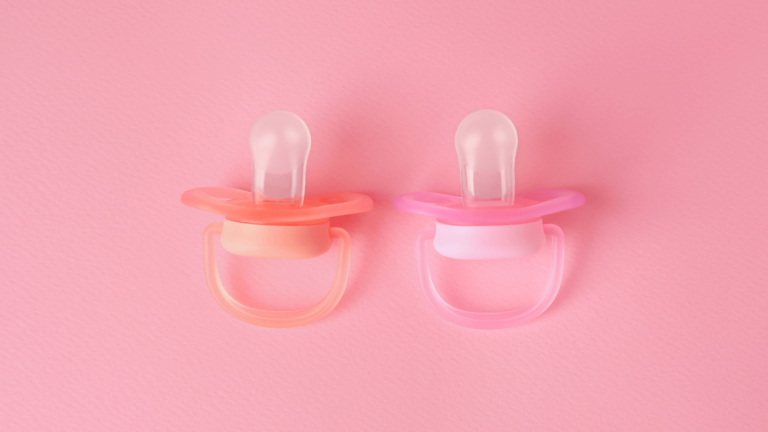A very common universal experience is that children don’t usually want to go to bed. It is one of life’s biggest ironies, as children we do not want to sleep, and as adults, it is one of our greatest desires! This resistance to bedtime is something parents around the world are all too familiar with. That being said, if your little one is suddenly and persistently crying during naps and bedtime for three or four days in a row, it might be more than the typical sleep fight. If this is the case, it may be time to consider increasing their awake time between naps and before night sleep. An easy way to lengthen wake windows is with the MAMAS Method.
One method to gradually extend your baby’s wake windows is the “MAMAS” approach. This strategy can help regulate your child’s sleep patterns, making both daytime and nighttime rest more peaceful. It is an effective method for encouraging feeding on demand which in turn will result in baby sleeping longer stretches at night. Here’s a breakdown of what “MAMAS” stands for:

M: Milk
Start with a feed. This gives your baby the necessary nutrients and energy to be active and engaged during their wake window. Whether your baby is breastfed or formula-fed, this initial feeding session is a crucial first step to ensuring the remaining steps fall into place.

A: Activity
After the first feed, engage your baby in various activities. This could include tummy time, playing on a play mat, or interactive games like peek-a-boo. Physical activity helps tire out your baby naturally, making them more ready for their next sleep session. That in mind, don’t put too much pressure on yourself. Your little one just wants to be next to you- so if you don’t have tons of toys or coming up with creative things to do with baby sounds daunting it is ok. Holding and talking to your baby is also great!

M: More Milk
The second feeding is where the magic happens. It will “fill your child’s tank” so they have a full belly for a nice long nap. It is also great for your milk supply, closeness with your child, and encouraging meeting caloric demands during the daytime, versus overnight! When baby gets the majority of their calories during the day they won’t need to wake overnight to meet these caloric needs. It is important to prevent baby from dozing off at the breast though. This is the first stage of sleep and if baby dozes at the breast it will impact the final step- baby’s nap/sleep. Once baby starts to flutter suck, offer breast compressions to help encourage a second let down. If baby continues to flutter suck instead of actively feed- end the feed and offer a burp.
A: Activity (Pause)
This pause between the second feed and sleep is essential. The length of this pause depends on your child’s age. For a three-month-old and younger, this pause is usually around 15 minutes. As your child grows, the pause extends—20 minutes for four to six-month-olds, and up to 30 minutes for those seven months and older. During this time, keep your child engaged but not overly stimulated, try a gentle activity or some quiet playtime.

S: Sleep
Finally, it’s time for sleep. With their energy levels balanced by milk and activity, baby will be ready for a restful nap or bedtime!
Lengthening Wake Windows
To increase your baby’s wake windows using the MAMAS method, start by moving the second feed later by 15 minutes and adjust their nap or bedtime accordingly. It’s key that your little one stays awake during the second feed. This feeding session should re-energize them just enough to make it through the extended awake period
With the MAMAS methos it’s important to increase your little one’s wake windows gradually. Try extending them by 15 minutes every three days and observe any changes. Each child has their own unique “sweet spot” for awake time, which may vary throughout the day. It’s common for children to need more awake time as the day progresses.

Sample awake time chart based on age ranges:
- Newborn to 3 months: Awake time is around 45-60 minutes.
- 3 to 6 months: Awake time extends to about 1.5 to 2 hours.
- 6 to 9 months: Awake time can be around 2 to 2.5 hours.
- 9 to 12 months: Awake time increases to approximately 2.5 to 3 hours.
- 12 months and older: Awake time can be 3 to 4 hours or more.
As you increase the wake windows, you’ll find your little one’s crying during naps and bedtime should start to decrease. This process helps them transition more smoothly into their sleep periods and prevents overtiredness, which is often a cause of crying and sleep resistance.
Remember, every child is different, and it might take some trial and error to find what works best for your little one. Patience and consistency are key. By gradually adjusting their awake time and using the MAMAS approach, you can help your child develop a healthy sleep routine that benefits both them and you. This method not only promotes better sleep but also strengthens the bond between you and your child through regular feeding and activity times. If you would like personal support with feeding or sleep we would be so happy to help! You can find a nurse to support you through your parenting journey here.








